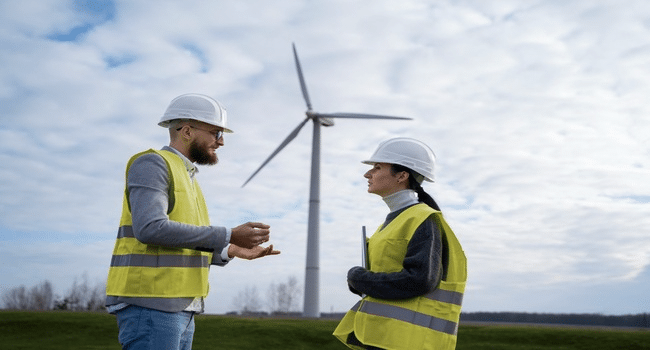Table of Contents
Sustainability has grow to be a riding force across each industry. From production and strength to statistics facilities and industrial buildings, businesses are rethinking how they consume and control electricity. While renewable electricity and inexperienced era frequently take middle degree, the actual foundation of sustainability lies deeper — within the electrical infrastructure and low-voltage switchgear structures that power the whole lot.
An efficient, contemporary electric network determines how properly electricity is used, how tons is wasted, and the way reliably systems perform. Without it, even the cleanest energy assets can’t supply their complete environmental or monetary blessings.
The Hidden Connection Between Infrastructure and Sustainability
Electrical infrastructure forms the spine of every facility’s energy distribution network — from switchgear and transformers to manipulate panels and automation systems. In many cases, these structures have been running for decades with little modernization.
Older infrastructure frequently lacks the efficiency and intelligence had to deal with these days’s power needs. It can cause higher power losses, voltage instability, and common maintenance cycles — all of which boom operational fees and carbon emissions.
Modern, nicely-engineered systems use smart generation and digital manipulate to control strength greater successfully. By upgrading outdated infrastructure, agencies can make immediately development closer to their sustainability targets without expecting fundamental renewable projects to go surfing.
Efficiency Begins with Smarter Distribution
A sustainable facility isn’t pretty much producing easy strength — it’s approximately dispensing it successfully. Modern electrical systems use intelligent switchgear, sensors, and virtual meters to monitor load conduct and energy excellent in real time.
This statistics-pushed method allows engineers to pick out inefficiencies, balance masses, and optimize distribution routinely. Small adjustments, such as correcting electricity component or redistributing loads throughout circuits, can appreciably lessen wasted electricity.
Smart distribution also enables facilities avoid overloading, which not simplest saves power but additionally extends the lifestyles of vital device. The end result is a leaner, greater dependable energy community that helps each value savings and environmental responsibility.
Supporting Renewable Integration
As more businesses undertake solar, wind, and other renewable resources, electric infrastructure plays a good larger position. Renewable electricity fluctuates with climate and demand, requiring systems which can balance and stabilize electricity waft.
Modern switchgear and control systems make this viable through regulating voltage, synchronizing electricity from multiple assets, and enabling electricity garage integration. A sturdy electrical backbone guarantees that renewable energy isn’t wasted and that operations remain strong even in the course of variable technology.
Without these upgrades, renewable systems can underperform or create grid instability — troubles that work directly in opposition to sustainability goals.
The Role of Digital Monitoring and Control
Digitalization has completely modified how facilities control strength. Today’s smart electrical structures constantly acquire performance records, helping operators make knowledgeable selections approximately while and the way to use power.
Real-time tracking highlights abnormal patterns including cutting-edge imbalance, overloading, or idle intake. Predictive renovation gear can even forecast while components are probably to fail, permitting groups to behave before inefficiencies or breakdowns occur.
This stage of visibility guarantees that strength is used exactly wherein it’s wanted, reducing waste and improving reliability. Digital infrastructure transforms sustainability from a theoretical aim into a measurable, doable system.
Energy Optimization and Carbon Reduction
Every kilowatt stored immediately reduces a facility’s carbon footprint. Modern electrical structures enhance power performance through advanced design, better insulation, and optimized power manipulate.
For instance, the use of variable-pace drives to manipulate cars or upgrading to high-efficiency transformers can substantially decrease power consumption. Even easy measures — like the use of sensors to automate lighting fixtures and HVAC systems — contribute to meaningful energy savings over the years.
These upgrades compound across massive facilities, resulting in each lower utility fees and measurable environmental blessings.
Reliability as a Sustainability Factor
Sustainability isn’t pretty much decreasing emissions — it’s additionally approximately making sure lengthy-term system stability. Power outages and electric failures waste assets, halt manufacturing, and require additional energy to restart strategies.
Modern infrastructure includes redundancy, computerized transfer switching, and real-time diagnostics that save you unplanned downtime. Predictive analytics can pinpoint problems before they enhance, keeping non-stop operation at the same time as fending off pricey energy loss.
Reliability is regularly unnoticed in sustainability discussions, but it’s one of the maximum essential factors in lowering waste and maximizing performance.
Economic and Environmental Benefits
Investing in modern-day electric infrastructure provides each financial and environmental rewards. Facilities that improve their systems regularly revel in:
- Lower strength bills from progressed performance
- Reduced upkeep charges through predictive tracking
- Fewer breakdowns and less cloth waste
- Improved compliance with environmental and safety requirements
- Enhanced ESG overall performance and corporate recognition
While modernization calls for in advance investment, the lengthy-time period financial savings and operational benefits a long way outweigh the costs. In maximum cases, upgraded infrastructure pays for itself through strength savings within a few years.
Building Toward a Smarter, Greener Future
Sustainability goals are evolving from brief-term strength targets to lengthy-time period strategies that include performance, reliability, and data-driven optimization. Electrical infrastructure is the muse of that progress.
Facilities that invest in smarter systems today are getting ready for a future in which electricity management isn’t simply green but adaptive — capable of responding to modifications in demand, integrating new technologies, and supporting smooth power adoption.
A sustainable future doesn’t begin with a single renewable project; it begins with rethinking how we manipulate and distribute each unit of energy we generate.
Conclusion
Electrical infrastructure is extra than simply the wiring at the back of the wall — it’s the heart of sustainable strength management. By upgrading systems, integrating virtual tracking, and enforcing advanced industrial strength solutions, groups can lessen energy waste, enhance reliability, and make significant progress closer to environmental dreams.
As industries flow towards decarbonization and smarter operations, modern electric infrastructure will continue to play a defining position — turning sustainability from an abstract idea right into a measurable, doable reality.
Read more on KulFiy
